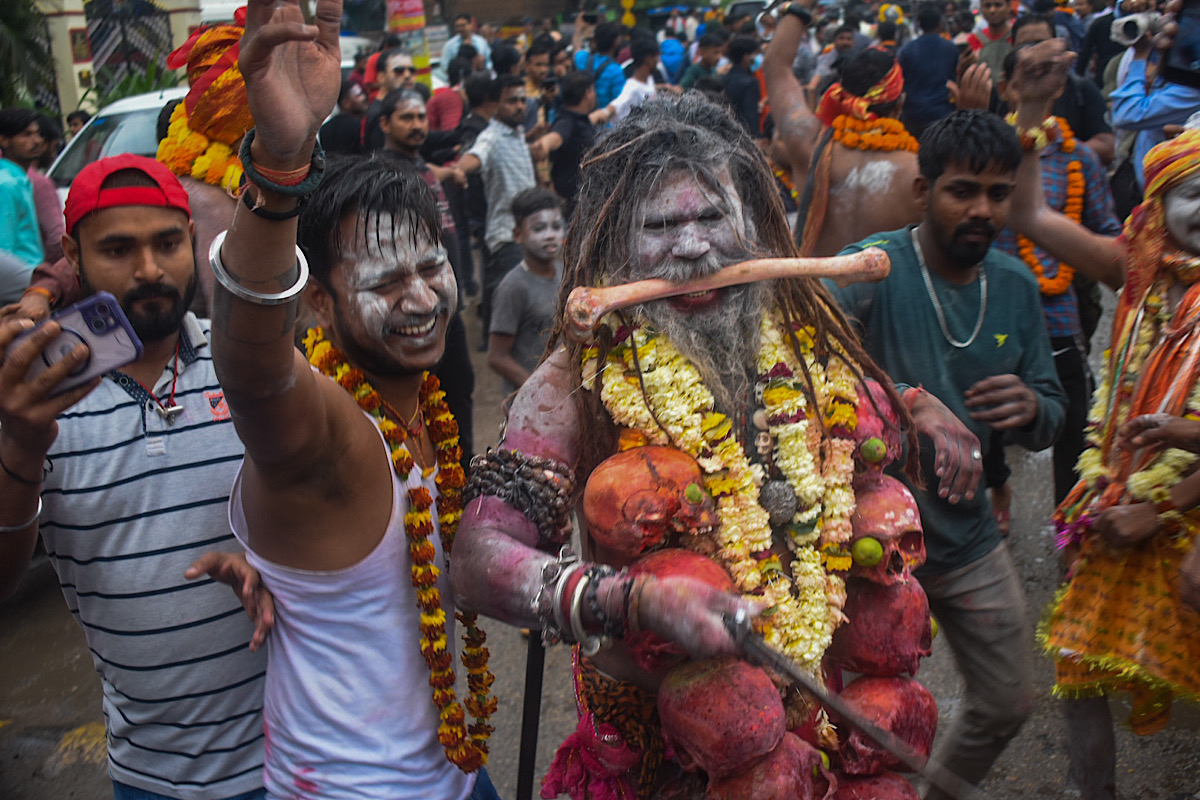Varanasi emerges as new industrial hub in Purvanchal
Improved law and order, robust infrastructure, and initiatives like the Global Investors Summit have created a business-friendly climate.
This festival of colours has its genesis in several myths, mythology and legendary tales and is more than just a festival of vibrant hues and community gatherings.
PRIYANJALI DAS | March 25, 2024 11:15 am

Photos by DEBROOP BANERJEE
Known colloquially as Shimga in Maharashtra, Baithaki Holi in Uttarakhand, Lathmar Holi in UP, Doljatra in West Bengal, Phaguwa in Bihar, and some more regional variation, the essence of Holi lies in its joyful celebration of the triumph of good over evil.
This festival of colours has its genesis in several myths, mythology and legendary tales and is more than just a festival of vibrant hues and community gatherings. The most ancient anecdote regarding Holi lies in the celebration of the divine love between Radha and Krishna. Krishna being dark-blue complexioned and Radha being fair often made Krishna self-conscious. Faced with a dilemma, he consulted his mother, Yashoda, and she advised him to smear Radha’s face with any colour he liked. Another myth surrounds the story of Hiranyakashipu, Prahlad, and Holika, symbolising that it is always devotion that triumphs over arrogance. While there are several legends and stories surrounding the celebration of Holi, the core of this festival lies in its union of humanity and is a testament to the embodiment of forgiveness, resumption and rebirth.
Advertisement
Advertisement
While the rest of India waits eagerly to celebrate the day with utmost fervour, tourists, locals, foreigners, and visitors alike witness a different Holi in India’s oldest and most sacred city, Kashi, Varanasi, or as we know it, Benaras. A divine celebration where instead of colours, ash is used, the ‘City of Temples’ starts celebrating Holi five days before the rest of India partakes in it.

Masan Holi, or Bhasma Holi, is a tradition that has been practised for centuries and is played on the day after Rangbhari Ekadashi with ashes from the crematorium pyre at Manikarnika Ghat, or mahashamshan. This is the ghat where Goddess Sati’s ear ornaments fell and is considered to be the most sacred among cremation grounds, believing that a body that gets cremated here attains moksha.
Played on 21 March this year, Masan Holi is a celebration like no other, where devotees of Shiv partake in this festival, celebrating the divinity of death and rebirth. “It’s like the whole of India is here to take part in the celebrations,” says Yogesh Kumar Soni, a devotee of Shiva who has been coming to Varanasi for the last five years to take part in the celebrations.
A celebration that is as old as the ‘City of Temples’, there is one major legend behind this celebration. It is believed that on Rangbhari Ekadashi, which falls on the Ekadashi Tithi of Shukla Paksha in the month of Phalgun, Mahadev and his wife Mata Parvati visited Kashi. Commemorating the divine union, all the other gods and the devotees had played holi with colours on that day with Shiv, and because the supernatural entities could not partake in the celebrations, Shiv came down to Kashi the next day to play with the celestial, unearthly entities (ganas) with ash from the pyre.
“The devotees play Holi with ash, and it’s a scene to behold. It is believed that Shiv comes down to earth on this day to play Holi with his devotees. A shobhayatra takes place from the Baba Mashan Nath temple after the devotees have offered their prayers to Mahadev, chanting ‘Har Har Mahadev’. Shiv is considered the creator and destroyer of everything, and Masan Holi signifies the balance between life and death, living and supernatural, creation and destruction. Playing with ashes is a sign of devotion to Mahadev,” says L.N. Das, a sadhu who has been residing in Varanasi for years now.
While Masan Holi was at first restricted to the saints and Aghoris, who were ardent followers of Lord Mahadev, tourists from all over the world now visit Varanasi at this time to be a witness to the magnificent celebrations that are a testimony to the transition of life and death. “You cannot take your eyes away from the celebration. It is mesmerising,” says a tourist hailing from Lucknow of this unique celebration.
Blurb:
Masan hues of Holi with ash: Varanasi’s unique Masan Holi is a profound experience of spirituality, life and death.
Advertisement
Improved law and order, robust infrastructure, and initiatives like the Global Investors Summit have created a business-friendly climate.
A cattle smuggler died and two others sustained injuries when police shot at them after their pickup van carrying cattle crushed to death a police constable, who tried to stop them in the Chandwak police station area of this Uttar Pradesh district.
Thanks to the efforts of Prime Minister Narendra Modi and Chief Minister Yogi Adityanath, Uttar Pradesh, especially Kashi (Varanasi), is rapidly emerging as a major attraction for both Indian and international tourists.
Advertisement
